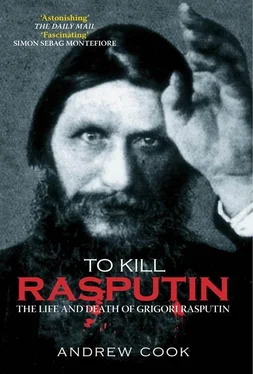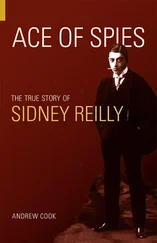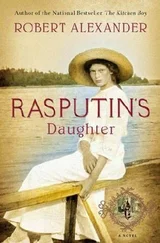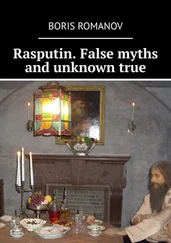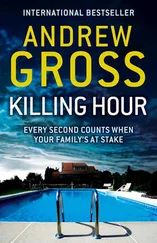The first and second shots were fired at close range in quick succession to each other, 19by guns of different calibre.
The third shot, fired at point-blank range to the forehead, was the fatal shot that killed Rasputin.
None of the shots was fired from a distance, which completely negates Purishkevich’s story. His claim to have fired the fatal shot is further discredited by the fact that his gun, a Savage, fired jacketed bullets which do not match the ballistics evidence for the fatal wound.
The wound made by the fatal third shot is compatible with an unjacketed .455 bullet from a British officer’s .455-inch Webley revolver.
Rasputin did not drown – he was dead before he was thrown in the river.
With these facts in mind, we now need to establish who was actually present at the scene of the murder and, more significantly, who fired the third and fatal shot that ended Rasputin’s life.
It seems clear that Rasputin was tempted to the Yusupov Palace on the Moika by the prospect of female company – specifically, a young and beautiful Romanov married to a well-known homosexual transvestite. The implication is that he was enticed by a possible seduction. He may have seen her photograph, but he had never met her. Invited, as he was, to meet her after midnight on a Friday, he could reasonably have expected to find a private party, and indeed to meet her in the company of others; but she was not there.
Yusupov told General Popov that two women had left with Dmitri Pavlovich. But by the time he related his account to Stopford on 6 June 1917, it was already coherent from repetition, and the women were left out. He contradicts Purishkevich’s ‘diary’ published the following year by denying that any women were present at all. But the police saw two. Madame Derfelden was held under house arrest for forty-eight hours after the murder, and Okhrana snoopers reported on Vera Koralli’s stay at her hotel. Early correspondence between Yusupov and Irina – who at one point fully intended to be present – refers to other women being invited.
At least two women were there.
There is also some confusion about Yusupov’s servants. He had a batman and a house steward. His batman could have been wearing military uniform, but Purishkevich had seen Yusupov’s servants before, and knew that only two of them were going to be on duty; and he is adamant that the two men on duty that night, the one who let him into the palace and the other ‘dressed in a soldier’s uniform’ sitting on the bench, were ‘soldiers’, not identifiable by rank. He is equally clear in calling Pavlovich’s batman a ‘servant’ and voicing strong disapproval of his having been let in on the secret. Frankly, Purishkevich didn’t approve of servants at all; ‘impudent’, he thought a chauffeur would look, and they were all a security risk as far as he was concerned. He did not think that the two men who opened the door to him and helped with the general clearing-up were servants. The Okhrana agent Tikhomirov witnessed a ‘man in military field uniform’ in the courtyard earlier in the evening. Yusupov, in his statement to Major Popov, uses the same description as if prompted. This could not have been Nefedev (Yusupov’s batman) or Byzhinski (the butler) or Yusupov, Purishkevich or Sukhotin, who would have been wearing tunics, i.e. formal uniform. Field uniform was worn on active service.
Yusupov says they took a soldier with them to help dispose of the body. Had Yusupov’s servant gone with them, he would have reported back to Yusupov on his return. But it was not until lunchtime the following day that Yusupov knew for sure from Dmitri Pavlovich where and how the corpse had been dumped. This implies that the ‘soldier’ was not Nefedev or Byzhinski. It is possible that there were two other people in military uniform. British officers in Petrograd wore Russian army greatcoats over their tunics as they considered their own coats inappropriate for the extreme cold of the Russian winter.
Oswald Rayner was in the palace that night. He was part of Yusupov’s intimate circle. A reticent man, he nevertheless confided in later life to his cousin Rose Jones that he had been in the palace on the night of the murder. 20He had, like John Scale, been ‘involved in the planning’. We know this because the diary of William Compton, Rayner and Scale’s chauffeur, records visits to the Yusupov Palace by Rayner and Scale on (British dates) 26 and 29 October, 3, 4, 9, 16 and 28 November and 2 December. (The corresponding Russian dates are 13, 16, 21, 22 and 27 October and 3, 15 and 19 November – five days before Purishkevich made his electrifying speech in the Duma.) The only date for which there is no entry in the diary is the day of the murder. 21
Scale left Petrograd for Romania on 11 November (24 November in the British calendar), so he cannot have been present for the last two meetings, or on the night of the murder. There is no doubt about this: his written record of the journey, and of his actions when in Romania, is vivid and indubitably true. The blown-up factories and burning oil fields that met the German invaders bear witness to the success of his dangerous mission. He received a DSO.
Captain Stephen Alley was also involved in the planning of Rasputin’s murder. As we have already noted, he and his family had a close and longstanding personal relationship with the Yusupov family. Like Rayner, Alley was a fluent Russian speaker. Did he accompany Rayner (with whom he shared an apartment) to the Yusupov Palace that night? Speaking fluent Russian and wearing Russian field coats, the pair would have been indistinguishable from any other Russian soldiers so far as Purishkevich, or indeed anyone else who might have met them that night, was concerned.
A British presence was, if anything, originally intended to be a token one, to discreetly observe that the job had been satisfactorily carried out. It is highly unlikely there was ever any anticipation that an active part would be taken in the proceedings. Further evidence of Alley and Rayner’s complicity is found in a letter Alley wrote to Scale eight days after the murder. Scale, who had just been ordered to return to Petrograd from Romania, had voiced the opinion that merely blowing up oil fields was not sufficient. He therefore proposed that RFC planes should follow up the sabotage with regular raids to ensure that the Germans were unable to get the wells back in production. 22London, it seemed, was a little apprehensive about the idea.
7th January, 1917
Dear Scale,
No response has thus far been received from London in respect to your oilfields proposal.
Although matters here have not proceeded entirely to plan, our objective has clearly been achieved. Reaction to the demise of ‘Dark Forces’ has been well received by all, although a few awkward questions have already been asked about wider involvement.
Rayner is attending to loose ends and will no doubt brief you on your return.
Yours, Stephen Alley, Capt. 23
There is also reason to believe that Rasputin’s body was photographed at some point in the night, as evidence that he was indeed dead, prior to the disposal of the body (which it was hoped would never be discovered). Two months after the murder, these photographs were apparently discovered by the police and referred to in a report.
SECRET
To the Chief of the Public Security Department
Petrograd
February 22nd, 1917
No 5698
Fifth Section
By order of the Chief of the Counter-Intelligence Department of the Petrograd Military District Headquarters dated February 18th, Ref 3641, a search was made on February 19th at the apartment of Prince Yusupov Count Sumarokov-Elston’s secretary, Lieutenant of the 308th Petrograd druzhina, Leonid Rambur, residing at Ofitserskaya 36. As a result of the search, two photographs have been discovered of Grigori Rasputin’s dead body along with a key to deposit box No 912 at the Azovsko-Donskoy Bank. Rambur, who is not registered in our records as politically disloyal, has been released. 24
Читать дальше
